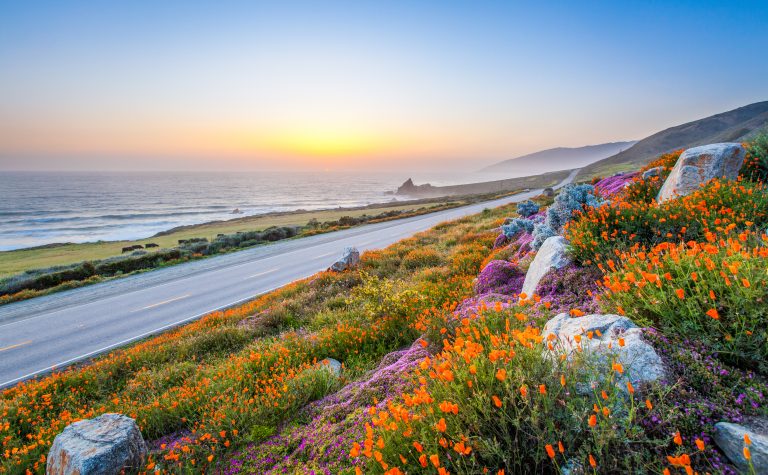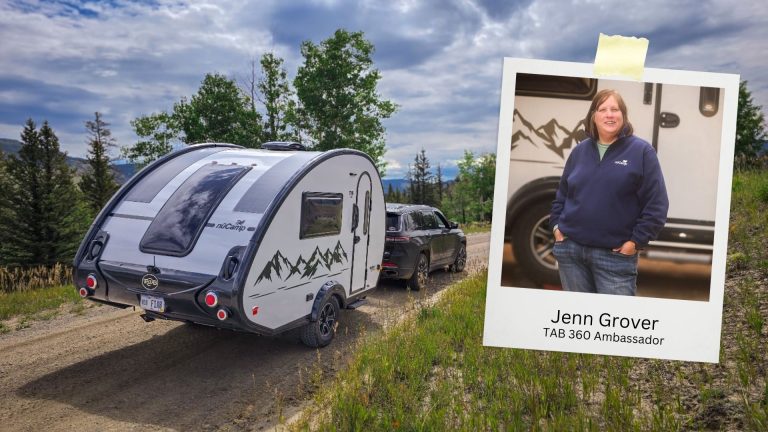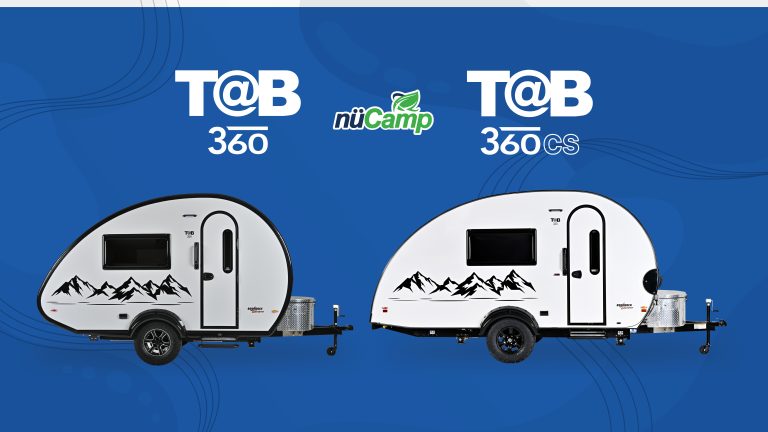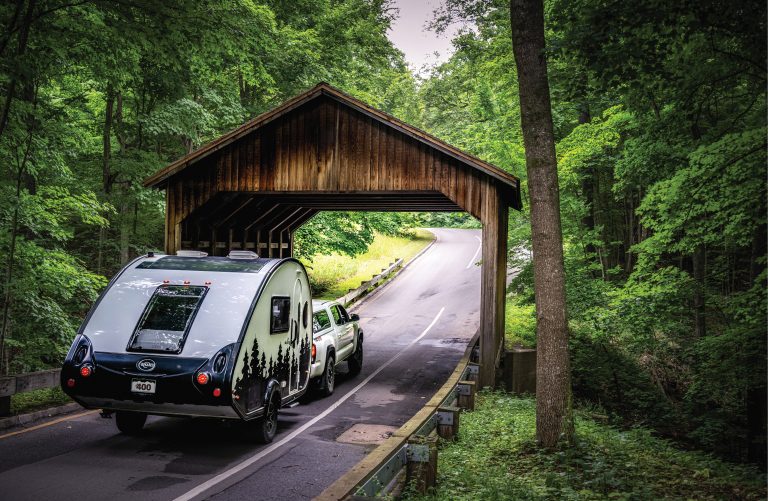If you have a disability, you might think that visiting a national park would be more of a challenge than you want to undertake. But the reality is that all parks in the National Park System address some — if not all — types of disabilities, including visual, auditory, and physical. That being said, some parks are more accessible than others or have addressed specific accessibility issues in more comprehensive ways.
Start with the National Park Service app with information about more than 400 national parks nationwide, including on-the-ground accessibility information. You can download the NPS App for free through the Apple App Store and Google Play. Visitors should contact parks directly for updated information about services and accommodations geared for those with disabilities.
In addition, the National Park System offers free, lifetime Interagency Access Pass available to U.S. citizens or permanent residents of the United States who have been medically determined to have a permanent disability. The Access Pass provides admittance to more than 2,000 recreation sites managed by five Federal agencies, and, at many sites, the Access Pass provides the pass owner a discount on Expanded Amenity Fees, such as camping, swimming, boat launching, and guided tours.
The Access Pass can be purchased through the USGS Online Store for a $10 processing fee. Applicants must provide a statement from either a licensed physician or documentation from a federal or state agency. More information is available here.
Do you have a service animal? The good news is that it is legally permitted anywhere that visitors can go. More details are on the Service Animals in National Parks page.
Accessibility Options at 8 National Parks
Here are eight ADA-friendly national parks for you to consider. For accessibility information at other locations in the National Park System, check the park’s website under Plan Your Visit in the menu.
Acadia National Park
25 Visitor Center Rd., Bar Harbor, ME 04609 | email | 207-288-3338
Acadia National Park has accessibility options for those with physical mobility, vision, or hearing disabilities. The free Island Explorer shuttle buses are equipped with a wheelchair lift, and provide service between Park destinations, local communities, and Bar Harbor-Hancock County Regional Airport. Parking lots have designated accessible spaces; however, not all destinations, trailheads, and scenic viewpoints have handicapped spaces.
Acadia has picnic areas and three campgrounds with designated accessible sites. The Park also has trails and paths offering varying degrees of accessibility as well as the Eagle Lake and Bubble Pond carriage roads that provide the best access to interior areas.
Those with vision disabilities can purchase CDs of the 56-mile (90 km) audio tour of Park Loop Road, Cadillac Summit, and Somes Sound at Hulls Cove Visitor Center. A Braille introductory pamphlet is available by request at the Hulls Cove Visitor Center or for download in a Braille Ready Format. For those with hearing issues, ASL interpreters and personal assistive listening devices are available with advance reservation for ranger-led programs.
Carlsbad Caverns National Park
727 Carlsbad Caverns Highway, Carlsbad, NM 88220 | email | 575-785-2232
Unlike many parks in the National Park System, Carlsbad Caverns attractions are below the surface. But thanks to the elevator service into and out of the cavern, even those with disabilities can enjoy them. Two-thirds of the Big Room Trail has a non-skid surface for those using wheelchairs and walkers and features interpretive signs along the way, with audio guides and the script available for download.
Aboveground, accessibility options are available at picnic areas, parking lot, and other areas. For more information, visitors can download the Park’s accessibility guide available on the website. Due to Covid-19, reservations are required to enter Carlsbad Cavern and can be purchased online or by calling 877-444-6777.
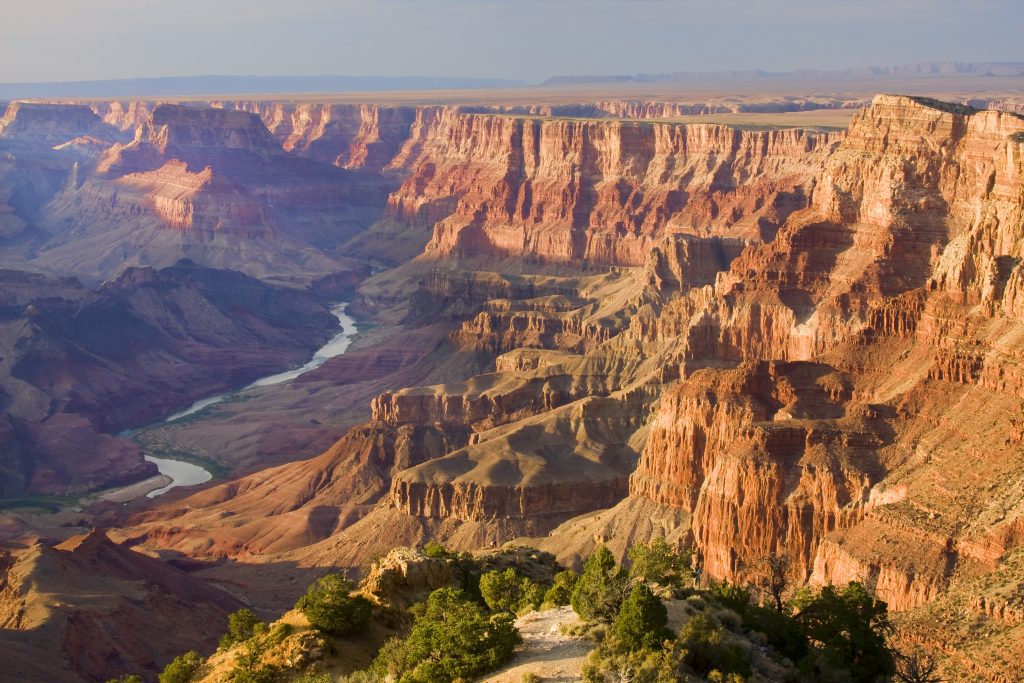
Grand Canyon National Park
20 South Entrance Road, Grand Canyon, AZ 86023 | email | 928-638-7888
Grand Canyon National Park, in Northern Arizona, encompasses 278 miles (447 km) of the Colorado River and adjacent uplands. A Scenic Drive Accessibility Permit, available at entrance gates and National Park Service visitor centers, allows entry for visitors with mobility issues to access Hermit Road and Yaki Point Road, two scenic roads closed to public traffic. At the South Rim, wheelchairs and tandem bicycles are available for rent at Bright Angel Bicycles next to Grand Canyon Visitor Center, while at the North Rim, a limited number of free wheelchairs are available for loan from the North Rim Visitor Center.
The 1.3-mile (2.1 km) Trail of Time is a wheelchair-accessible trail between Verkamp’s Visitor Center and Yavapai Geology Museum, with the latter offering a tactile relief map and Trail of Time touchable rock samples for visitors with visual impairment. The Monument Creek Vista on the South Rim has a wheelchair-accessible section that is part of the Rim Trail leading to Hermits Rest.
Those with hearing issues can contact the Park at 928-638-7888 or grca_information@nps.gov at least three weeks ahead of time to request an ASL interpreter for free park ranger programs at both the North and South Rims.
All Park shuttle buses are equipped with ramps and space to carry passengers in wheelchairs and can accommodate wheelchairs no larger than 30 inches wide by 48 inches long (76 by 122 cm). More details about the Park’s accessible services, facilities, and activities are available in the downloadable Accessibility Guide.
Shenandoah National Park
21073 Skyline Drive, Front Royal, VA 22630 | email | 540-999-3500
At Shenandoah National Park, visitors with disabilities can enjoy what the Park has to offer. The Park brochure is available in braille at entrance stations and visitor centers or by download in Braille Ready Format (brf). Assistive listening devices are available for loan at both visitor centers for ranger programs and Park films. Many of Shenandoah’s ranger-led programs are accessible, as indicated on the ranger program schedule.
Those with physical disabilities can take advantage of the Limberlost Trail — a fully-accessible circuit hike that passes through a beautiful section of forest. Another option is to tour the Park via the 105-mile Skyline Drive that runs north and south along the crest of the Blue Ridge Mountains in Shenandoah National Park.
Accessible sites are available at all park picnic grounds and campgrounds, while accessible shower and laundry facilities are available at Big Meadows, Lewis Mountain, and Loft Mountain campgrounds. Restrooms at all picnic grounds are accessible or accessible with assistance.
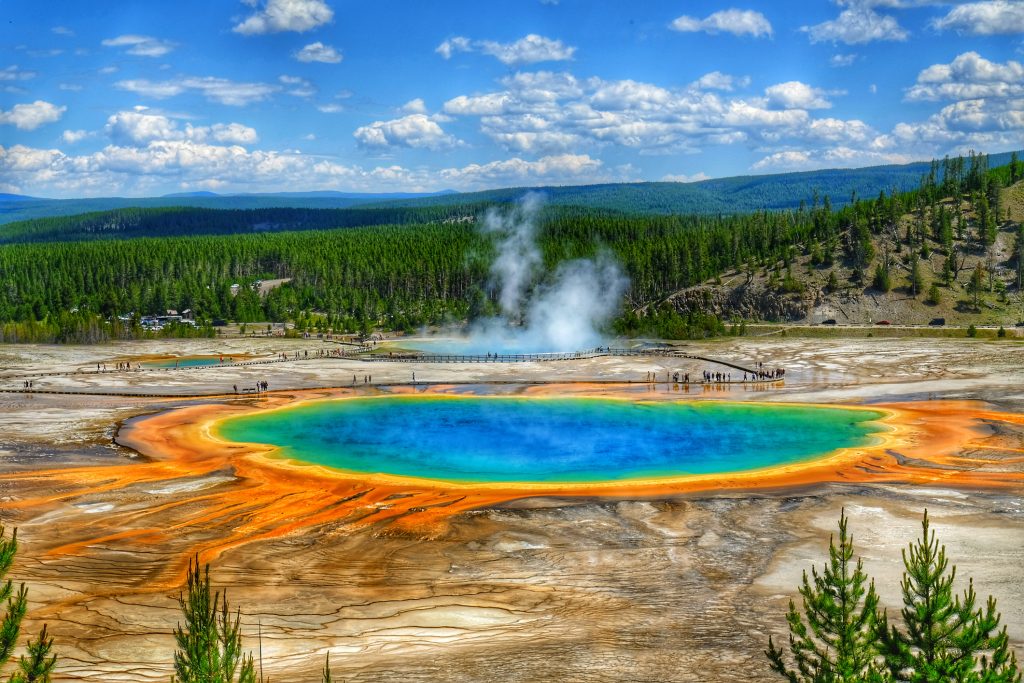
Yellowstone National Park
2 Officers Row, Yellowstone National Park Headquarters, Yellowstone National Park, WY 82190 | email | 307-344-7381
The world’s first national park, Yellowstone, has focused on making key areas of its 2.2 million acres as accessible as possible for all visitors, including those with disabilities. The official Yellowstone Map & Guide is available as an audio description and in large print and braille versions from the visitor centers by contacting the park or downloading a copy in a Braille Ready Format (BRF).
Audio and visual assistance includes Sign Language Interpreters, available for ranger programs with three weeks’ notice by calling 307-344-2251 or emailing. Films shown at the Canyon and Old Faithful visitor centers include assistive listening devices, and the Albright Visitor Center has induction loop technology at the information desk. The Park’s calendar listings include information about ranger-led accessible programs.
Information about wheelchairs and mobility in Yellowstone, as well as location-specific accessibility features information, is available here. All campgrounds have at least one wheelchair-accessible site, with two backcountry campsites maintained to accommodate wheelchair users.
Manual wheelchairs are available for loan at Old Faithful, Canyon, Mammoth (Albright), Grant, Fishing Bridge, and Norris visitor centers and at most lodging facilities. Wheelchairs can be rented on a first-come, first-served basis at medical clinics, and a beach wheelchair is available for use along the shore of Yellowstone Lake. Stand-up devices such as the Segway® Personal Transporter are permitted with certain restrictions for those who would otherwise need to use manual or motorized wheelchairs.
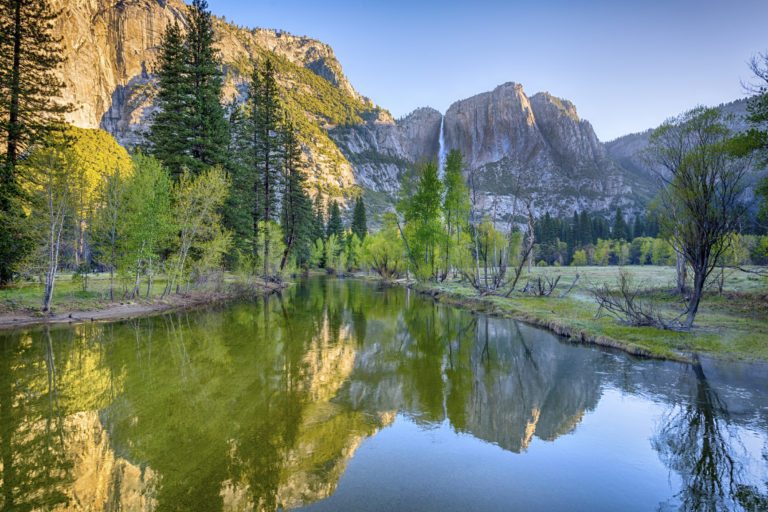
Yosemite National Park
Sierra Nevada, California | email | 209/372-0200. NOTE: Yosemite covers 1,200 square miles and does not have a single address.
With almost four million visitors each year, Yosemite’s goal is to provide the highest level of accessibility by using principles of universal design. Visitors can download the comprehensive Accessibility Guide that describes access to areas, facilities, and services for people with disabilities or download a folder of mp3 files to listen to the park brochure.
There is also a Visual Guide to Visiting Yosemite Valley for people with aphasia as well as a Braille file version of the park brochure. Sign language interpreting and assistive listening devices are available for free for all park programs. For more information, go to the Yosemite Deaf Services page.
For younger visitors, Yosemite has a downloadable Junior Ranger Handbook – Adapted Activities for children with diverse communication, learning, motor, and/or sensory needs who have difficulty using speech or writing implements.
The free Yosemite Valley shuttle system provides convenient access to Yosemite Valley. All buses are accessible with wheelchair lifts and tie-downs. The maximum size for wheelchairs on shuttle buses and tour buses is 24 inches wide by 46 inches long, with a weight limit on tour buses of 750 pounds.
Only individuals with disabilities may use other-power-driven mobility devices (OPDMDs) in the Park; however, they are prohibited in undeveloped and designated wilderness areas. Standard bicycles, two manual wheelchairs, and two OPDMDs/electric mobility scooters called Rascals are available for rent.
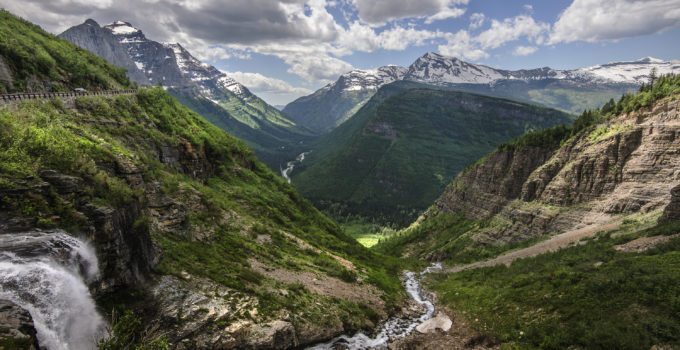
Glacier National Park
64 Grinnell Drive, Glacier National Park Headquarters, West Glacier, MT 59936 | email | 406-888-7800
Glacier National Park is a spectacular mix of melting glaciers, alpine meadows, deep valleys, and more than 700 lakes. Glacier’s Accessible Facilities and Services brochure offer a broad overview of accessibility information, including ranger-led activities that focus on engaging multiple senses and learning styles.
The lower elevation sections of the Going-to-the-Sun Road are open year-round, while the alpine portion opens sometime in the summer, based on snowfall and plowing progress. A fare-free wheelchair-accessible shuttle is available on a first-come, first-served basis, enabling visitors with a disability to access many destinations along the route. A shuttle map is available for download.
Many of the park’s videos that are available with open captions on the accessible video page. The Visitor Center videos are captioned, with assisted listening devices available upon request in person. The National Park Service may be able to provide ASL interpretation for any ranger program with a two-week minimum notice. Glacier’s Accessible Facilities and Services brochure is available in a large-print version, as braille handouts or downloaded in Braille Ready Format (BRF).
Rocky Mountain National Park
1000 US Hwy 36, Estes Park, CO 80517 | email | 970 586-1206
Throughout its 415 square miles, Rocky Mountain National Park has many accessible facilities for visitors, including visitor centers, scenic overlooks, self-guided trails, campgrounds, picnic areas, and a backcountry campsite. The Park has an all-terrain wheelchair available at no charge with advance reservation.
There are four accessible trails in the Park and three campgrounds with accessible campsites: Moraine Park, Glacier Basin, and Timber Creek. Free shuttle buses operate in the Bear Lake Corridor of the Park, all with wheelchair lifts and tie-downs.
Braille and large-print versions of the Park brochure are available at the Beaver Meadows Visitor Center or by download for use with assistive technology. The park film is captioned for hearing-impaired visitors at Beaver Meadows and Kawuneeche visitor centers and features audio descriptions for the visually impaired at Beaver Meadows Visitor Center. Assisted listening devices are available for ranger-led programs with a three-day advance notice by calling 970-586-1206. A certified sign language interpreter can be provided with a month’s advance notice to accompany a ranger during a ranger-led program by calling 970-586-1206.
While wheelchairs are allowed anywhere foot travel is permitted, the use of Electric Personal Assistance Mobility Devices (EPAMD) by those with mobility disabilities is restricted to accessible trails listed here.
Recent Articles
